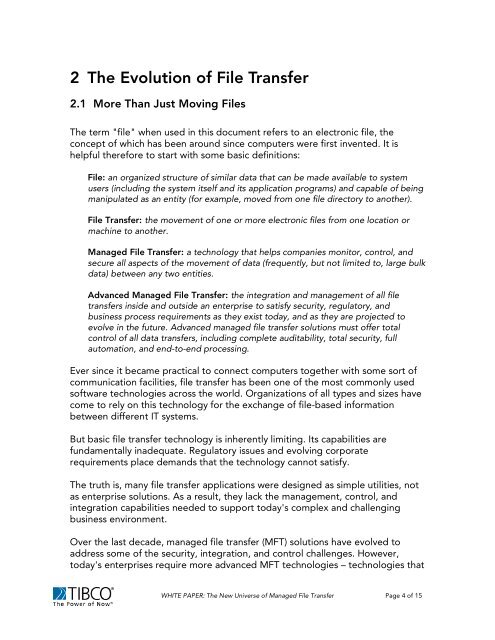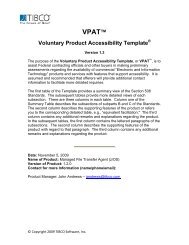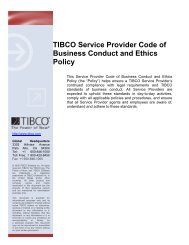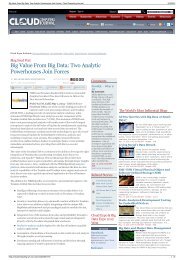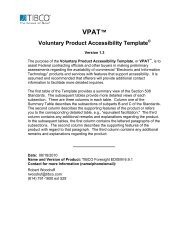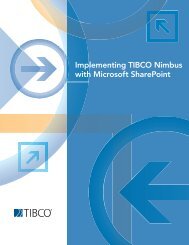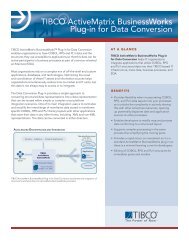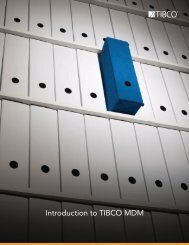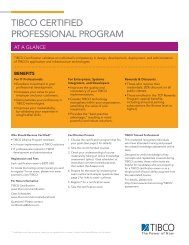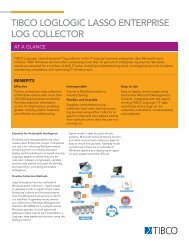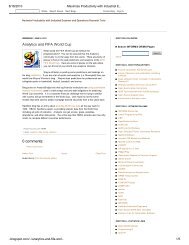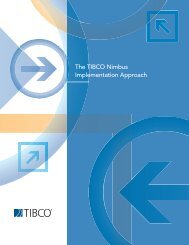CyberFusion Integration Suite - Tibco
CyberFusion Integration Suite - Tibco
CyberFusion Integration Suite - Tibco
You also want an ePaper? Increase the reach of your titles
YUMPU automatically turns print PDFs into web optimized ePapers that Google loves.
2 The Evolution of File Transfer<br />
2.1 More Than Just Moving Files<br />
The term "file" when used in this document refers to an electronic file, the<br />
concept of which has been around since computers were first invented. It is<br />
helpful therefore to start with some basic definitions:<br />
File: an organized structure of similar data that can be made available to system<br />
users (including the system itself and its application programs) and capable of being<br />
manipulated as an entity (for example, moved from one file directory to another).<br />
File Transfer: the movement of one or more electronic files from one location or<br />
machine to another.<br />
Managed File Transfer: a technology that helps companies monitor, control, and<br />
secure all aspects of the movement of data (frequently, but not limited to, large bulk<br />
data) between any two entities.<br />
Advanced Managed File Transfer: the integration and management of all file<br />
transfers inside and outside an enterprise to satisfy security, regulatory, and<br />
business process requirements as they exist today, and as they are projected to<br />
evolve in the future. Advanced managed file transfer solutions must offer total<br />
control of all data transfers, including complete auditability, total security, full<br />
automation, and end-to-end processing.<br />
Ever since it became practical to connect computers together with some sort of<br />
communication facilities, file transfer has been one of the most commonly used<br />
software technologies across the world. Organizations of all types and sizes have<br />
come to rely on this technology for the exchange of file-based information<br />
between different IT systems.<br />
But basic file transfer technology is inherently limiting. Its capabilities are<br />
fundamentally inadequate. Regulatory issues and evolving corporate<br />
requirements place demands that the technology cannot satisfy.<br />
The truth is, many file transfer applications were designed as simple utilities, not<br />
as enterprise solutions. As a result, they lack the management, control, and<br />
integration capabilities needed to support today's complex and challenging<br />
business environment.<br />
Over the last decade, managed file transfer (MFT) solutions have evolved to<br />
address some of the security, integration, and control challenges. However,<br />
today's enterprises require more advanced MFT technologies – technologies that<br />
WHITE PAPER: The New Universe of Managed File Transfer Page 4 of 15


